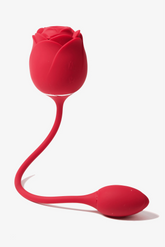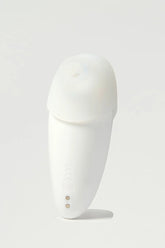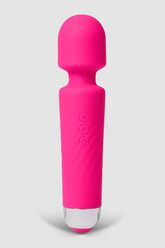What Does an Orgasm Feel Like? A Female Guide
Every woman experiences pleasure in her own way. For one, it might feel like a spark that builds until it takes over her whole body. For another, it’s a soft pulse that rolls and fades, leaving a quiet smile behind. Some say it’s heat, others say it’s light, and a few admit it’s something that words never quite capture.
So, what does an orgasm feel like—really? It’s not one single thing. It’s a conversation between body and mind, a rhythm that builds through trust, touch, and release. It’s science and emotion blending together.
This guide looks at what actually happens during an orgasm, how women describe the feeling, and why it’s as much about connection and comfort as it is about pleasure.
What Happens During an Orgasm
An orgasm is the body’s natural response to sexual arousal—think of it as a release valve for tension. It builds slowly, layer by layer, and when it finally peaks, the body lets go in a wave of muscle contractions and warmth.
Here’s what typically happens:
- Blood flow increases to the genitals.
- The clitoris and vaginal walls swell with sensitivity.
- Pelvic muscles pulse in small, steady contractions.
- Breathing deepens and heartbeat speeds up.
- The brain floods itself with dopamine and oxytocin.
According to Cleveland Clinic (2024), an orgasm activates more than the body. It lights up the brain’s reward and emotion centers, creating a whole-body response that links physical pleasure with emotional release.
(Source: Cleveland Clinic – Orgasm Overview)
That’s why many women describe it as a blend of feelings—relief, connection, and sometimes even joy that feels strangely spiritual.
What Does a Female Orgasm Feel Like
No two experiences are alike. Some women feel pressure building low in the pelvis, others sense warmth climbing through their core, spreading into their legs or chest.
Here’s how women describe it in their own words:
“It starts slow, like a wave rising, then it breaks all at once.”
“It’s pulsing and uncontrollable—like my body takes over.”
“Sometimes it’s wild and sharp, sometimes it’s soft and deep.”
“A full-body orgasm feels like my entire skin is breathing.”
A Reddit user from r/vaginismus once said:
“It’s like sneezing, but in your whole body—and you actually want it to happen.”
(Source: Reddit – What Does an Orgasm Feel Like)
It’s not just physical. Mood, safety, and emotional connection all shape how an orgasm feels. The same woman might experience it differently from one day to the next.
Why Do Orgasms Feel So Good
The reason orgasms feel amazing comes down to chemistry. When climax happens, your brain releases a wave of dopamine, oxytocin, and endorphins—all chemicals that say, “You’re safe, you’re happy, you can relax now.”
- Dopamine gives the rush of joy and excitement.
- Oxytocin creates bonding and affection.
- Endorphins reduce pain and produce euphoria.
As Healthline (2024) explains, this mix triggers both emotional and physical balance, helping the body reset after arousal.
(Source: Healthline – Types of Orgasms)
That’s also why the post orgasm feeling often feels peaceful or even sleepy—your body literally moves into recovery mode.
How to Make a Woman Orgasm
If you’re asking how to make a woman orgasm, start here: every woman’s body has its own rhythm. There’s no single technique that works for everyone.
Here are a few gentle rules that do help:
- Start with comfort. Desire begins with trust.
- Don’t rush foreplay. Slow touch, kissing, or massage gets blood flowing and the mind relaxed.
- Focus on the clitoris. It’s small but powerful—over 8,000 nerve endings make it the center of female arousal.
- Use rhythm, not force. Consistent motion beats speed every time.
- Ask questions. A simple “Does this feel good?” can do more than guessing ever will.
- Stay patient. Pressure kills pleasure. Curiosity builds it.
And remember—helping someone reach orgasm isn’t about ego. It’s about listening and learning together.
The Science of Full-Body Orgasms
A full-body orgasm goes beyond the genitals. It feels like waves that ripple through the chest, thighs, and spine, creating a sense of floating or vibration. It’s not about strength—it’s about connection.
It often happens when a woman feels relaxed, confident, and fully present. Deep breathing and slow rhythm help the energy move freely.
Flo Health (2024) explains that full-body orgasms involve the whole pelvic floor and surrounding muscles, sending small “electric” waves across the body.
(Source: Flo Health – What Does an Orgasm Feel Like)
You can’t force it. You can only allow it.
Different Types of Female Orgasms
Women can experience several kinds of pleasure—sometimes separately, sometimes together.
- Clitoral Orgasm: Sharp, focused pulses centered on the clitoris.
- Vaginal Orgasm: Deeper and slower, felt internally, often from G-spot stimulation.
- Blended Orgasm: When both internal and external pleasure meet in one steady rhythm.
- Full-Body Orgasm: Expansive and wave-like, spreading warmth through every limb.
- Multiple Orgasms: Repeated peaks before total relaxation.
So how many orgasms can a woman have? There’s no limit. Some feel one deep release; others enjoy several waves. The point isn’t how many—it’s how connected and comfortable it feels.
The Post Orgasm Glow
After climax, the body resets. Muscles loosen, breath slows, and the mind quiets down. Some women laugh. Some cry. Some just stay still, letting warmth spread.
The post orgasm phase can last minutes or linger for hours. It’s a mix of satisfaction, calm, and intimacy.
Teen Vogue (2024) says this “afterglow” helps couples bond emotionally and reduces anxiety.
(Source: Teen Vogue – What an Orgasm Feels Like)
That’s why so many describe it as grounding—it’s not just release, it’s restoration.
When Orgasms Don’t Come Easily
If reaching orgasm feels hard, you’re not alone. About 35% of women report difficulty climaxing regularly, often due to stress, medication, or lack of communication.
Here’s what helps:
- Let go of pressure. It’s not a test.
- Try self-exploration to learn your body’s rhythm.
- Focus on breathing and staying relaxed.
- Remember: pleasure itself matters as much as climax.
You’re not broken. You’re just learning your own language of sensation.
Explore: Our women’s guide to self-pleasure and body confidence.
Why Talking About Orgasms Matters
For decades, conversations about women’s pleasure were hidden behind silence. But that silence is breaking.
National Orgasm Day, celebrated every July 31, reminds us that pleasure is part of health. It’s a time to talk without shame, to understand that sexuality and self-care belong together.
As Asexuality.org users point out, pleasure looks different for everyone—and that’s okay.
(Source: Asexuality.org – What Does Orgasm Feel Like)
Talking about orgasms doesn’t just normalize them—it teaches people that feeling good is human, not taboo.
Creating Comfort for Pleasure
Pleasure needs space to grow. Here’s how to make that space yours:
- Know your rhythm—everyone’s body responds differently.
- Set the scene—soft lighting, warmth, and privacy help.
- Use water-based lube—it’s gentle, safe, and keeps things smooth.
- Try toys if you like—vibrators, wands, or even your hands, with curiosity, not pressure.
- Breathe—relaxation keeps sensitivity alive.
The goal isn’t to control the experience. It’s to stay present and enjoy what unfolds.
Final Thoughts
So, what does an orgasm feel like? It’s warmth, rhythm, pressure, and peace. It’s the body letting go and the mind going quiet for a moment that feels endless.
But it’s also more than sensation. It’s trust, discovery, and sometimes love—whether shared or felt alone.
Pleasure isn’t a finish line. It’s part of knowing who you are. Whether you’re exploring what makes you feel alive or celebrating National Orgasm Day, remember: your pleasure belongs to you—and that’s something worth honoring.
Explore: How to make a woman orgasm comfortably and confidently.





















